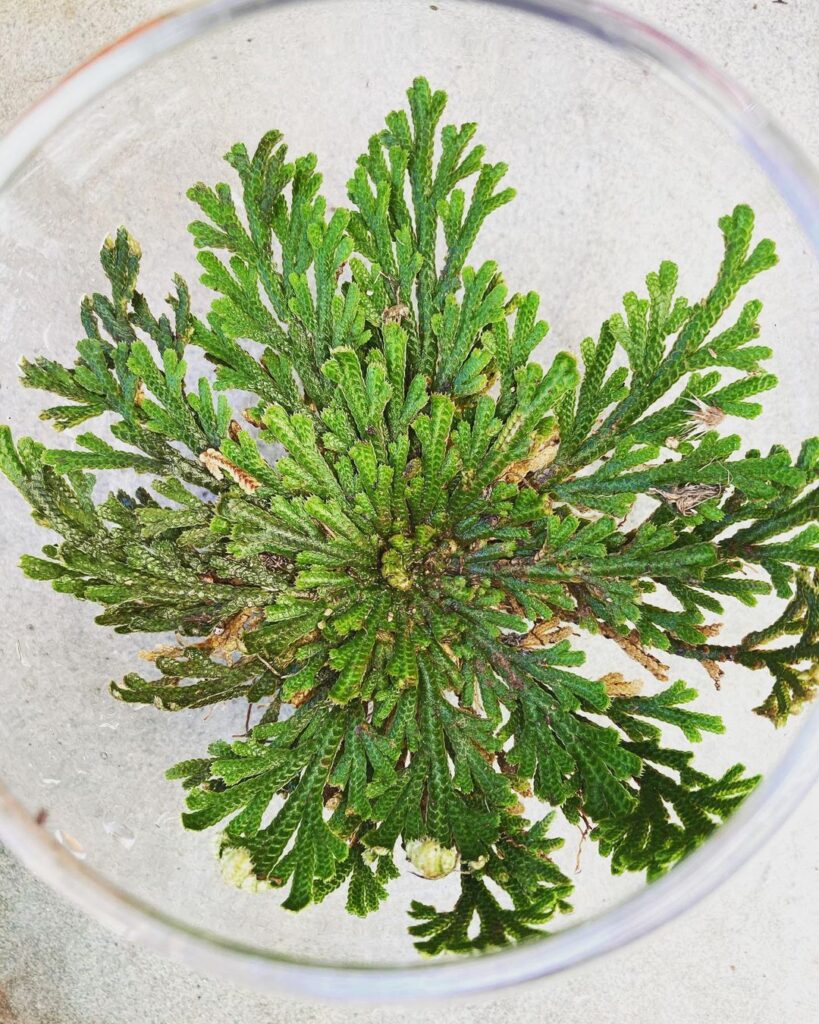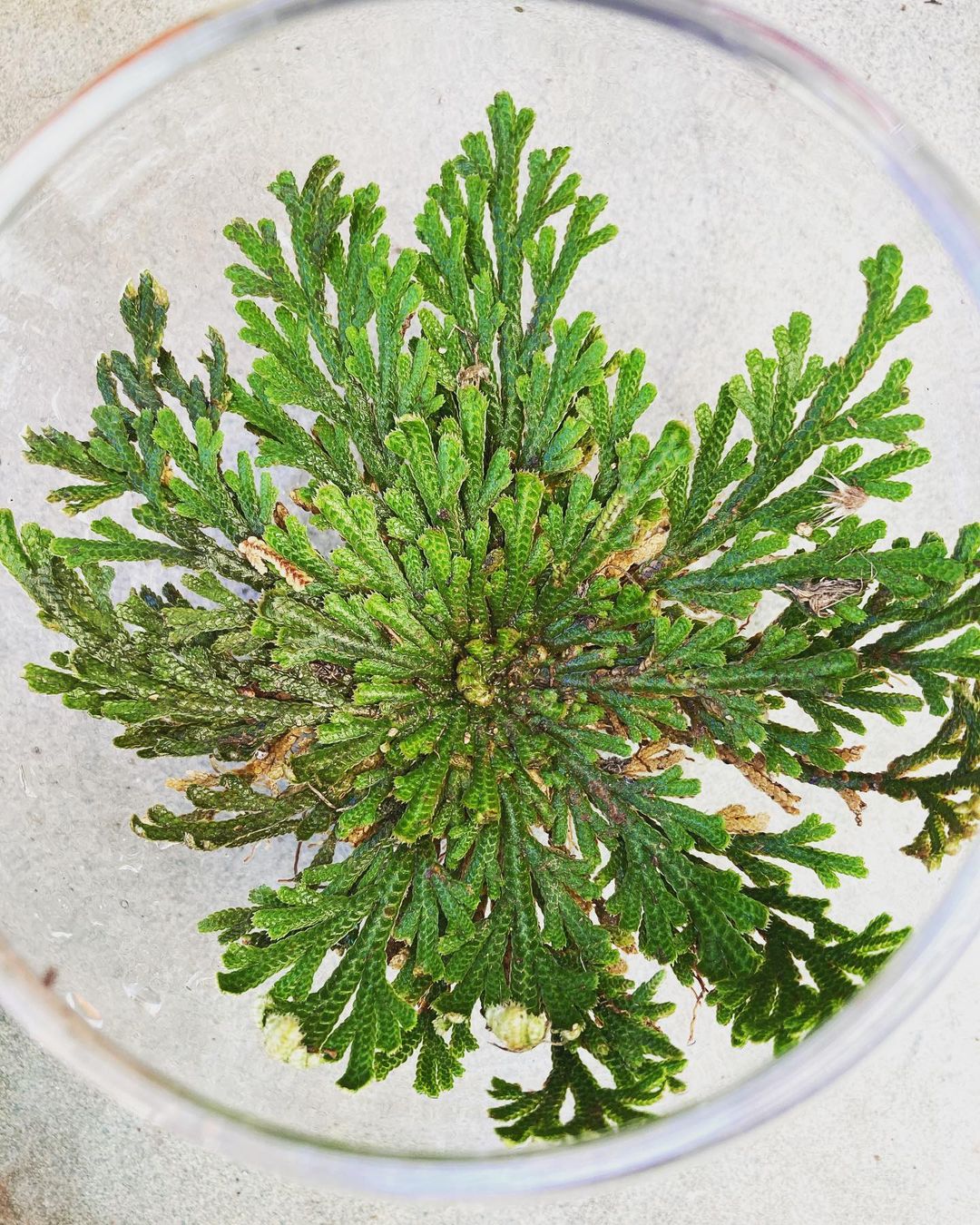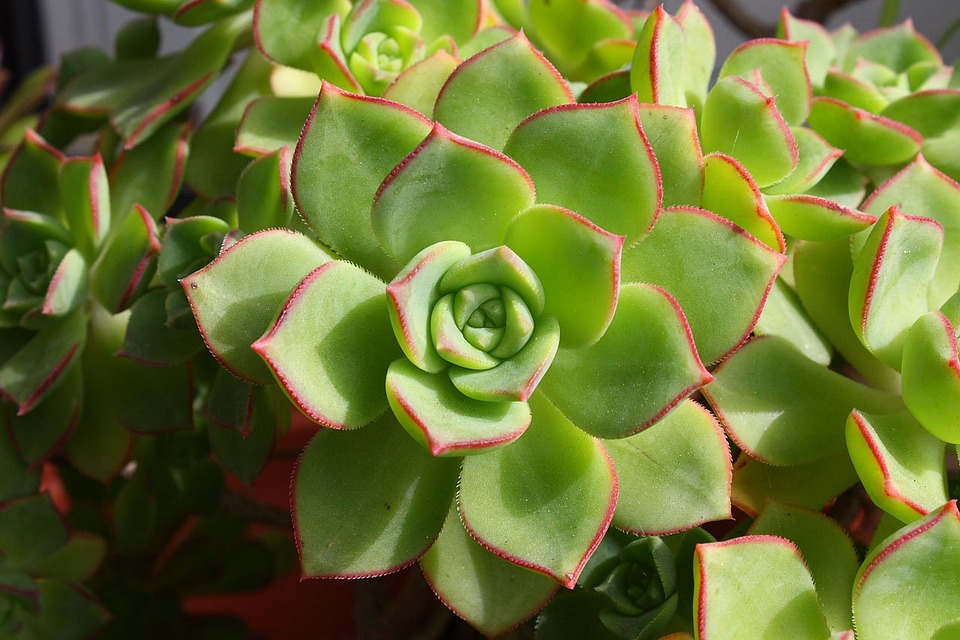Rose of Jericho, or the resurrection plant, is popular for its ability to live for years. It can be grown both with and without soil.
Rose of Jericho is a remarkable plant that is known for its ability to survive in a dormant state for years, and with the right care, it can thrive in your home or garden.
Common Names: Rose of Jericho, Resurrection plant, stone flower, dinosaur plant, false Rose of Jericho
Botanical Name: Selaginella lepidophylla
USDA Zone: 10
Read: Monkey Cup Plant Growing Guide
What is Rose of Jericho

The term “Rose of Jericho” can refer to two distinct plants, both of which are known as resurrection plants. There are around 130 plants with this unique ability. They belong to different families and are not commonly found in nurseries. The two plants known as the “Rose of Jericho” are Anastatica hierochuntica (also called the “True” Rose of Jericho), which is native to the Middle East, and Selaginella lepidophylla, which is more widespread and considered more visually appealing.
They belong to the ancient class of lycophytes. The Rose of Jericho is unique in surviving without water for several years. Unlike flowering plants, it reproduces asexually with spores.
The plant can appear completely dead, but with the addition of water, it can come back to life within hours, turning green and becoming fern-like. This “resurrection” phenomenon is a survival mechanism developed by Selaginella lepidophylla in the harsh conditions of its native Chihuahuan Desert. During droughts, the plant dries out and curls its fronds inward, forming a ball shape.
Rose of Jericho plants can survive in harsh desert conditions by remaining dormant and traveling as tumbleweeds until they come across water. Upon exposure to moisture, these slow-growing plants rehydrate and unfurl their beautiful fern-like fronds. One such example is the Selaginella lepidophylla, which is often grown as an indoor houseplant due to its adaptability.
It is important to note that the resurrection plant should not be confused with the resurrection fern (Pleopeltis polypodioides), which also goes dormant and “resurrects” with water exposure. But it is native to the United States and typically grows outdoors in the South, often climbing trees like moss.
How to Propagate Rose of Jericho
When it comes to propagating resurrection plants, division is the most effective method. As sporophytes, these plants don’t produce seeds or flowers but instead multiply through spores.
- To divide the plant, take cuttings in the spring or late fall.
- Cut a section of the plant that includes the full length of its fronds.
- Place the cutting on top of loose soil or gravel, and add water to activate growth.
- You should see new growth within a few days.
- Afterward, care for the new plant as you would the parent by placing it in well-draining soil or on a tray or bowl of water and gravel.
How to Plant Rose of Jericho
The Rose of Jericho may look like a dried-up ball of moss when you first get it, but it has roots that don’t require soil.
To plant, fill a pot or bowl without drainage holes with pebbles and water until just barely submerged. Place the plant on top so the roots touch the water. Change the water daily and give the plant a dry day each week, and every few weeks, let it dry out completely. You can also plant it in the soil if desired, but be aware that it can grow quite large.
Read: Passiflora Caerulea Growing Guide
Ideal Growing Conditions for Rose of Jerico
Sunlight
Rose of Jericho plants require an ample amount of light. Position them in a spot that receives bright, indirect light, like a window that faces south or west. However, it’s important to steer clear of locations that are directly exposed to scorching sunlight, as this could be too intense for a resurrection plant that has acclimatized to an indoor environment.
Soil
Soil is not necessary for growing the Rose of Jericho. These plants can thrive in a bowl of pebbles barely submerged in water, but make sure to give them rest periods. Alternatively, after being rehydrated in water, they can be transferred to soil and grown as a potted plant using a well-draining potting mix such as a combination of one-part sand, one-part potting soil, and two-part humus.
Watering
To rehydrate the Rose of Jericho, place them in a container filled with pebbles and water.
Ensure that the water level reaches just above the pebbles to provide a secure resting place without submerging the plants too much.
- For best results, use distilled or rainwater or let tap water sit out overnight.
- After about three to four hours, the plant will begin to unfurl and will fully revive in a few days.
- However, it’s important to note that the Rose of Jericho plants cannot survive in constant water. So, dedicate at least one water-free day per week and allow them to dry out completely every few weeks to avoid rotting.
To keep your Rose of Jericho clean and healthy, change the water daily. However, skipping a day occasionally is okay. Each night, replace the water, and in the morning, drain the dish and add fresh water.
Tip: Remember to give the plant water-free rests once a week and let it dry out for a week every month. This low-maintenance plant is also perfect for vacation time – simply take it out of the water, put it in a dark, dry spot, and it will dry up until you return to revive it. No need to worry about plant sitters!
Temperature
Despite being a desert plant, the Rose of Jericho flourishes at room temperature and is sensitive to sudden temperature changes, drafts, and vents. It’s crucial to avoid extreme heat or cold, as both can cause damage to the plant.
Read: Tievine Care and Growing Information
Rose of Jericho Care
Fertilizer
Rose of Jericho has low fertilizer requirements. Apply a diluted water-soluble houseplant fertilizer twice a year, during early spring and mid-summer. Use a 1/10 dilution of the recommended strength for regular houseplants to avoid over-fertilization.
Pruning
While pruning is not necessary for the Rose of Jericho, you can use sanitized scissors to trim away any dead tips that don’t revive when the plant is fully hydrated. This simple practice will help to maintain the plant’s overall appearance.
Overwintering
The Rose of Jericho plant is sensitive to extreme temperatures, both hot and cold. If you choose to place your plant outside during the summer months, you can preserve it in its dormant state throughout the winter by bringing it indoors.
To properly store it, place it inside a paper bag or box in a cool, dry area where it will be safe from any potential damage. Over time, the plant will dry out and await revival during the following spring. On the other hand, while growing indoors resurrection plants, there is no need for any special winter maintenance.



